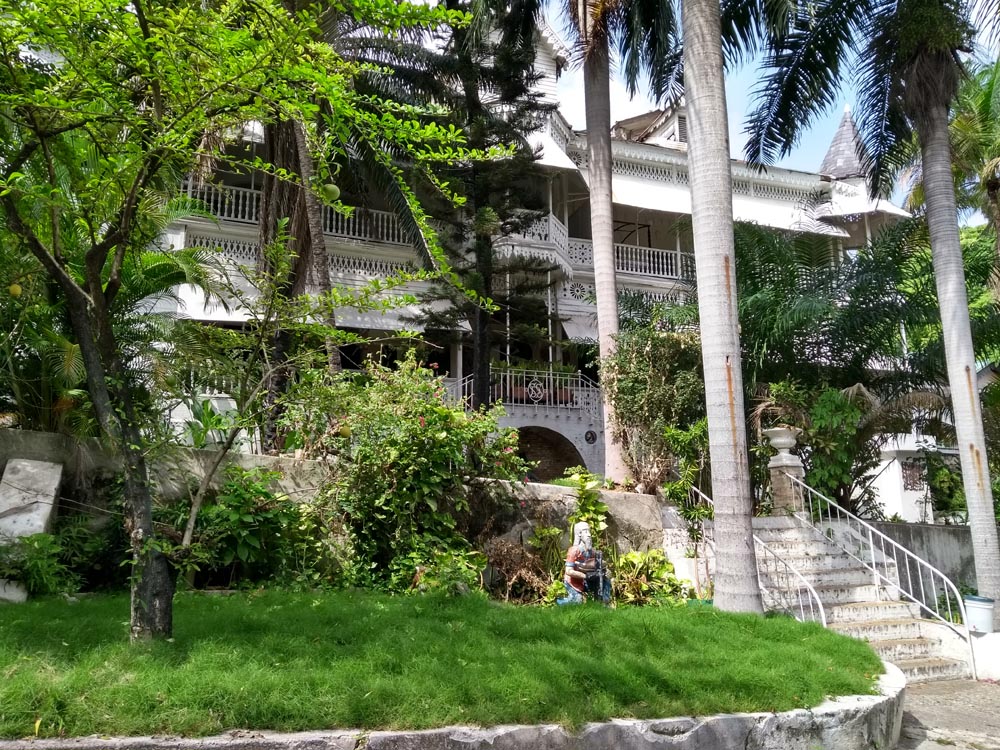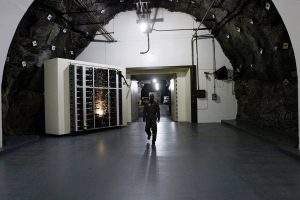Part 1 of the Haiti chronicles
Part 1 Dean Karalekas explores Haiti
I regretted the decision almost as soon as I arrived.
When Azda gave me the choice of renting a car or a motorcycle as he showed me around his country, I immediately opted for the motorcycle. For one thing, I hadn’t ridden a motorcycle in years and looked forward to the chance to deke in and around the immobile cars I was assured would populate the streets of Port-au-Prince. For another, I’m a cheap bastard, and two wheels were sure to cost less than four. But now, after having been picked up at the airport by Azda and his driver, Vladimir, I realized it meant the three of us, sitting ass to crotch, on a single motorcycle for four days.
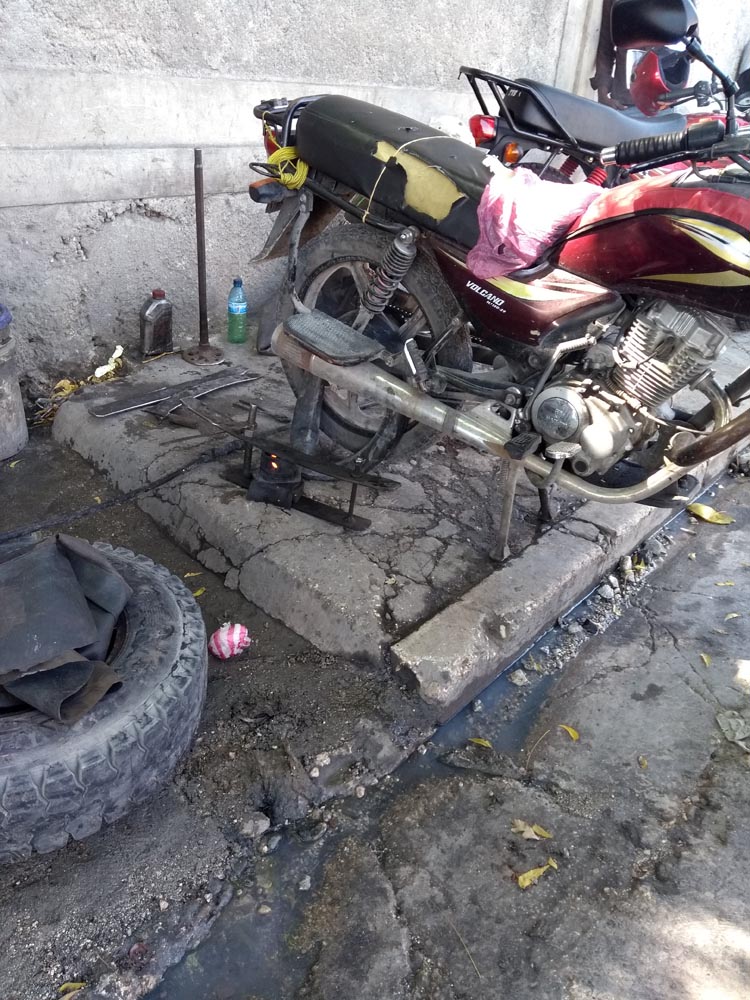
It was only 8:30 AM, but already the litter- and rubble-strewn streets were filled with people going about their day, many manning roadside stands selling fruit, gum, and cellphone accessories. The roads were, as promised, heavy with traffic, but they were also in such a state of disrepair that forward progress meant a constant start-stop jerkiness that my head became a pendulum, constantly threatening to head-but Azda behind me or give me an eyeball full of Vlad’s dreadlocks in front.
Just moments later, on the way to check in at the hotel and drop off my bag, our cramped chopper suffered a flat tire. If I were given to believing in omens, this would have been an ill one. I now felt doubly exposed, without wheels, out on the streets of Port-au-Prince, and quite obviously a tourist, a word that, in much of the world, often equates to “target.”
Back home in Canada, a punctured inner tube would take days, or at best hours, to deal with, depending on your warrantee and proximity to a garage. I would soon learn, however, that Haiti’s lack of infrastructure and regulations are also its strengths, depending on your point of view.
After consulting briefly with a local passerby, Vlad pushed the bike into a nearby side street, Azda and myself in tow. There, in front of a graffiti-adorned concrete wall, a young man had set up an open-air mechanic shop. His technique for fixing flat tires was ingenious: without bothering to dismount the wheel from the bike, he prised the tire off the rim and slipped the tube out for inspection. With an air compressor and some soapy water, he managed to find the puncture (and two others), and—with the tube still in the fork, mind you—scored the affected area of the inner tube, applied a pinched-off bit of rubber band to it, folded it over, and wedged it into a jerry-rigged clamp made of suspension leaf springs welded to an old piston head that carried an open flame.
To my amazement, the heat and pressure restored the integrity of the inner tube, allowing us to get back on our way after just a few moments’ delay. I have since learned that the process is known as “hot patching” among motorcycle enthusiasts, and like so much of what I would see during my stay in Haiti, there is some controversy over whether it is real or merely the stuff of legend. I can attest: it is real.
The integrity of our tire restored, the guys ferried me to the hotel to check in and drop off my bag. I was fortunate enough that the online booking site I used had the Hotel Oloffson come up in the search results, and for a decent price, too. At the time of booking, I hadn’t realized that the hotel is itself a tourist attraction here, being emblematic of the Gingerbread style of elaborate wooden mansions built between about 1880 and 1920.
Named for the elaborately embellished fretworks and lattice known as gingerbread trim, the architectural style was adapted to meet the local climatic conditions in Haiti, including tall ceilings, large attics, and wraparound porches. This particular building was built in the late 19th century by the Sam family—one of whom served briefly as Haiti’s president, before being literally torn to pieces by a mob of rioters—and was subsequently purchased by a Swedish sea captain, who converted it into a hotel in 1935.
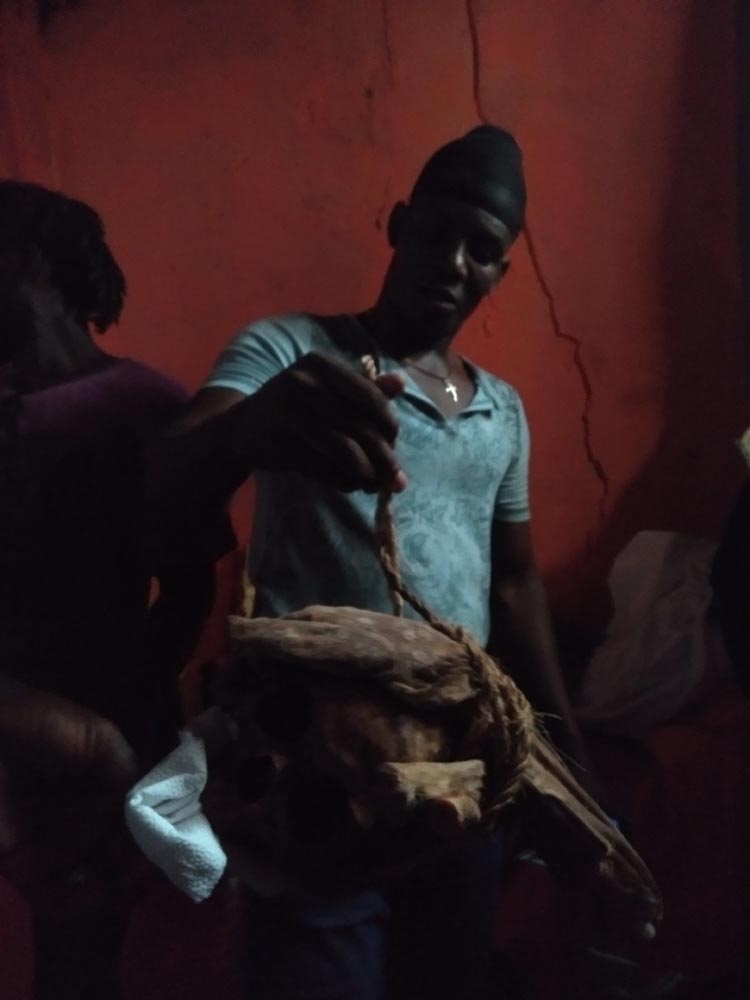
Adding to the anachronistic creepiness of the architectural style are the multitudes of art objects, statuary, and various gimcracks related to Haiti’s history and religion: the guest is greeted first by a statue of Baron Samedi, identifiable by his distinctive top hat and cane. Known as the Master of the Dead, he is placed in a central position in a grotto at the bottom of the stairs, perhaps reflective of his central position in the Vudou worldview. Some of the statues are in possession of enigmatic gifts seemingly left by pious passersby: a domino tile; a cheap, beaded necklace; an old rum bottle filled with small peppers soaking in a mysterious liquid: They stood as small reminders that I will never understand the full story behind what I was witnessing here.
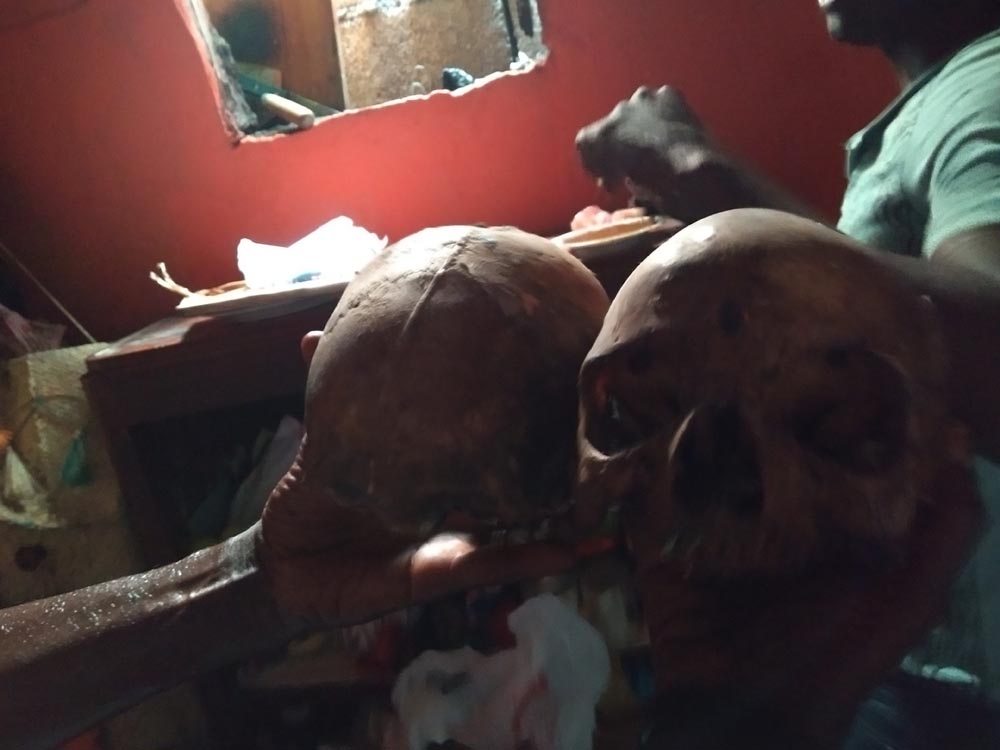
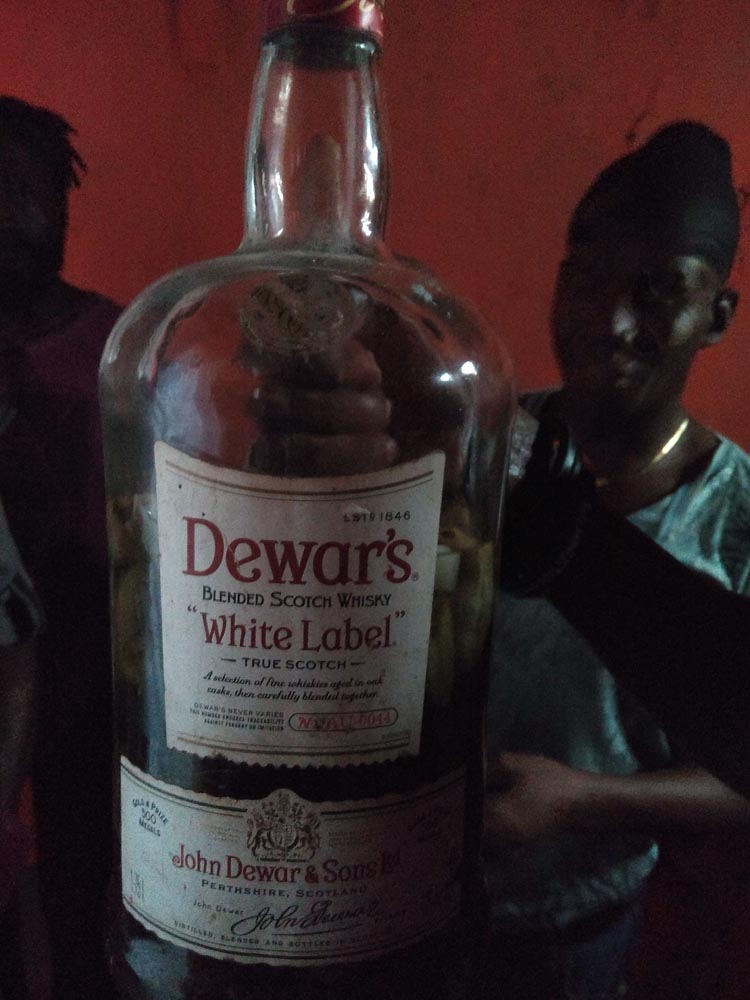
All these adornments, fascinating to the anthropologist in the daylight, give the place a sinister aspect after dark. It transports the guest back to another time—a time before WiFi and 24-hour air conditioning, it’s true: but a time too when corners of the world were still unknown, and science didn’t yet have an answer for everything, and the world of the living, and that of the dead, still met briefly at symbolic crossroads. This made it the ideal base from which to explore Port-au-Prince, capital city of Haiti.
I would have liked to have settled in a bit before jumping into the day’s itinerary. I had been up since 3 AM and was dead tired, and it wasn’t yet noon. But Azda was keen to begin showing me around his city, and I was keen to begin seeing it.
For our first stop, Azda arranged for me to visit a neighborhood Vodou temple, or hounfour, to learn about the Lwa and their place in the lives of the people. Here I met Fourchard and Bisint, who served as the houngans for this neighborhood congregation, called Sosyete Apredye. Bisint’s English was very good by the standards of Haiti, and he was kind enough to explain the basics to me as he showed me around his peristile, a sacred space.
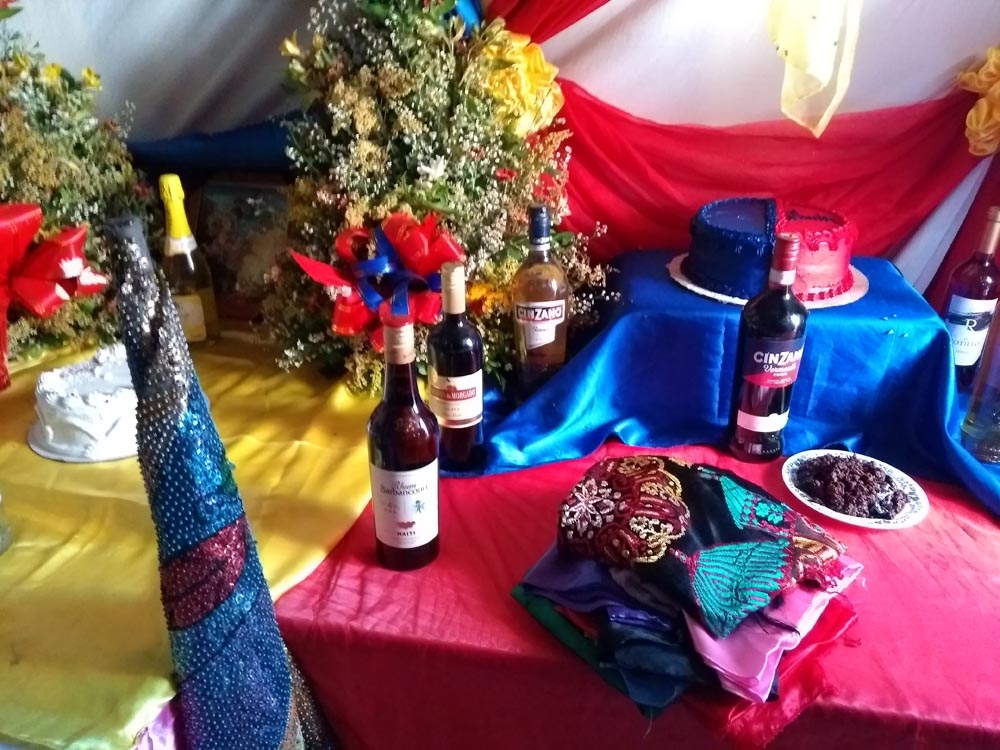
The outer room was a rainbow of fabric, gorgeously adorning the walls and tables on which offerings to the Lwa rested. These are the spirits that serve as the intermediaries between man and God: Bondye, or “Bon Dieu.” As I understand it, they are akin to Angels, or what my own ancestors referred to as Daemons. Whereas Bondye is the creator, He takes a hands-off approach to the affairs of man, leaving it up to the Lwa to handle individual requests for divine intervention.
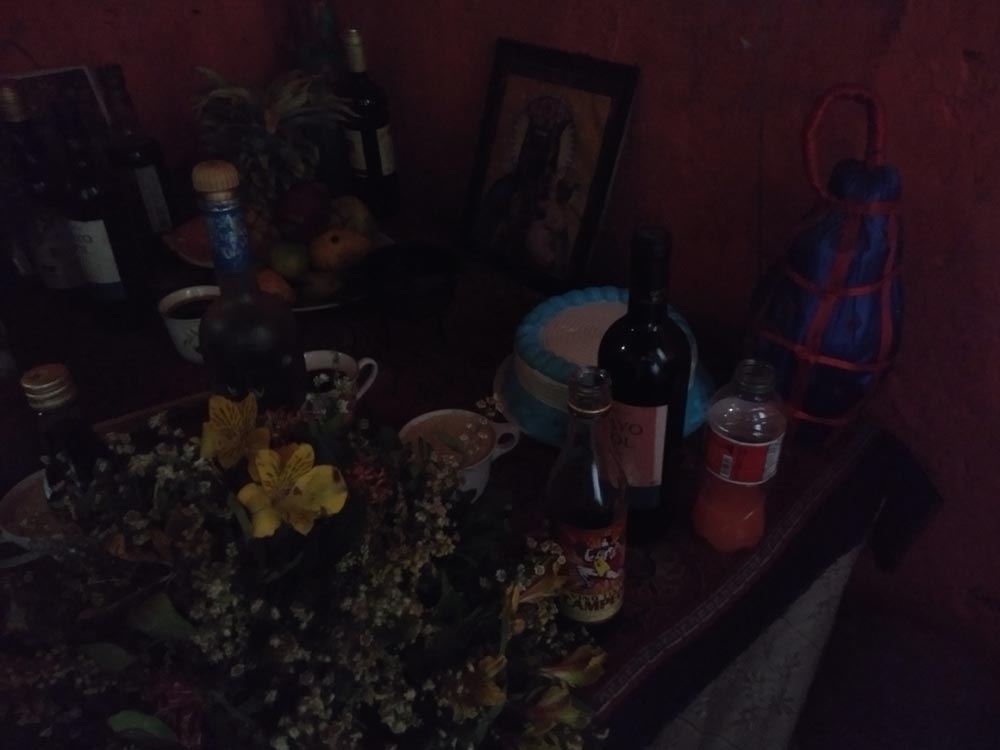
Several items were placed on the tables as offerings to the spirits, and our price of admission was to contribute a bottle of rum, which I purchased during a quick stop at Azdas mother’s tiny but impressively stocked streetside shop in Jalousie. Lwas love rum, I was assured. In addition, each spirit in the Vodou belief system has a favourite colour, and so the Lwas whom this Sosyete serve each had a section of table devoted to them, on which the congregants had placed plants, ribbons, paket kongo (decorated cloth packets of herbs and other spiritual objects), and goodies in the Lwa’s preferred colour, such as cakes and selections from the Magic Sparkling cocktail line (which come in distinctive colours and flavours).
For example, a white cake with pink icing trim, as well as a 750ml. bottle of Magic Sparkling Pink Cocktail, was laid out for Erzulie Freda, the Lwa of love and of sex. As feared as she is loved, Freda is the spirit of beauty, wealth, femininity, and of course, vengeance.
Further down the table, a similar offering was left for Freda’s sister, Erzulie Dantor, in her own preferred colour scheme of blue, red and black, in addition to a print of a young St. John the Baptist, here known as her son, Ti Jean Dantor. She is the spirit of motherhood, and hence of protection, and is revered for her strength: whereas Freda weeps for the injustices of the world, Dantor thunders in rage.
The imposition of Christianity upon the Haitian people more than two centuries ago forced the folk religions underground. More than this, the symbolism and imagery of the Christian church became syncretized with the beliefs that accompanied the slaves from their native Africa, creating a unique and dynamic pantheon of spirits who are commonly and openly identified with their saintly doppelgangers.
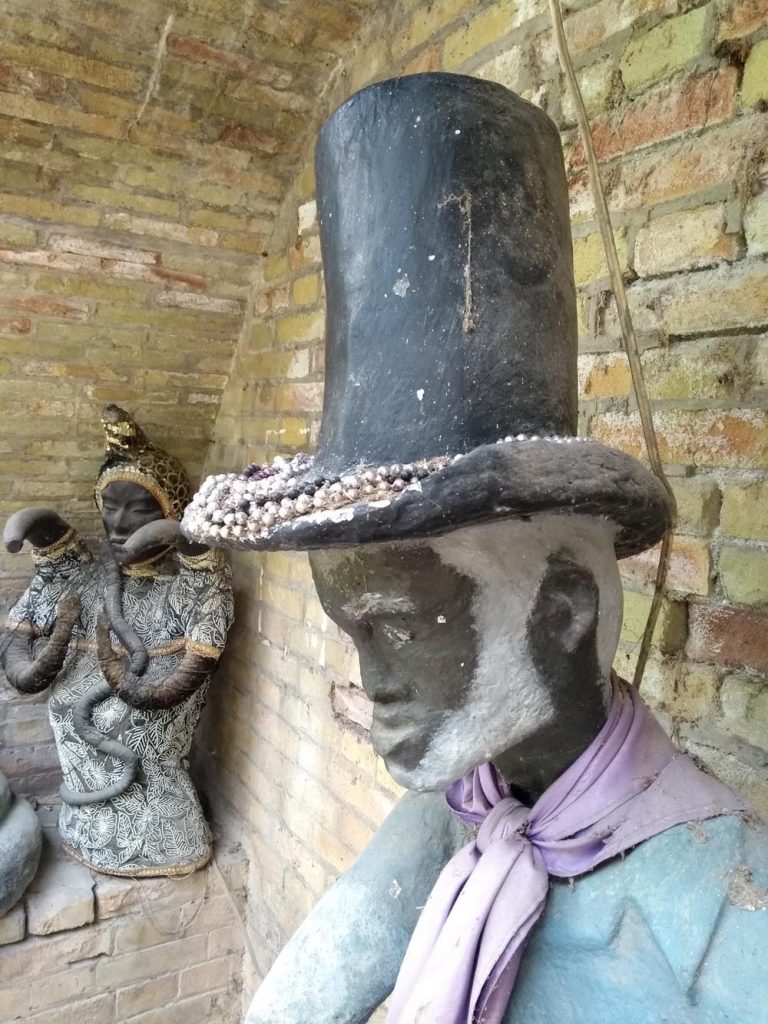
For example, Dantor is syncretized with the Black Madonna of Częstochowa; an icon of the Virgin Mary located in Poland’s Jasna Góra Monastery. The image of the icon of the Black Madonna is thought to have been brought to Hispaniola’s shores by Polish Legionnaires employed by Napoleon to crush the Haitian Revolution. In the true Polish tradition of siding with the underdog, these mercenaries switched sides, joining the slave uprising and helping them defeat the French instead.
Danto is considered the mother of the Petro nation—Lwas are divided into nachion or nations—whereas Freda is a Rada Lwa (a nation of Lwas derived directly from Africa) and so together they embody the dynamic encapsulated in the Haitian philosophy of balanse, which seeks to maintain balance in the spiritual forces at play in this world and the next, not unlike the more familiar concept of Yin and Yang.
In fact, I found myself reassured by the similarity of what I was seeing here in Haiti and the peristile with the folk religion in Taiwan, where I had lived for many years. There, too, the people believe in a wide array of spirits that can intercede in the affairs of man if sufficiently propitiated with offerings of food, drink, and other colourful items arrayed on tables. There, too, spirits routinely cross the threshold into our world, at certain times and under certain conditions, sometimes to possess a spirit medium, called a tangki, whose role is not unlike that of the Haiti Vodou houngan or mambo. These similarities—and the reassurance they gave me—ended, however, when Fourchard and Bisint brought me into the sanctum sanctorum.
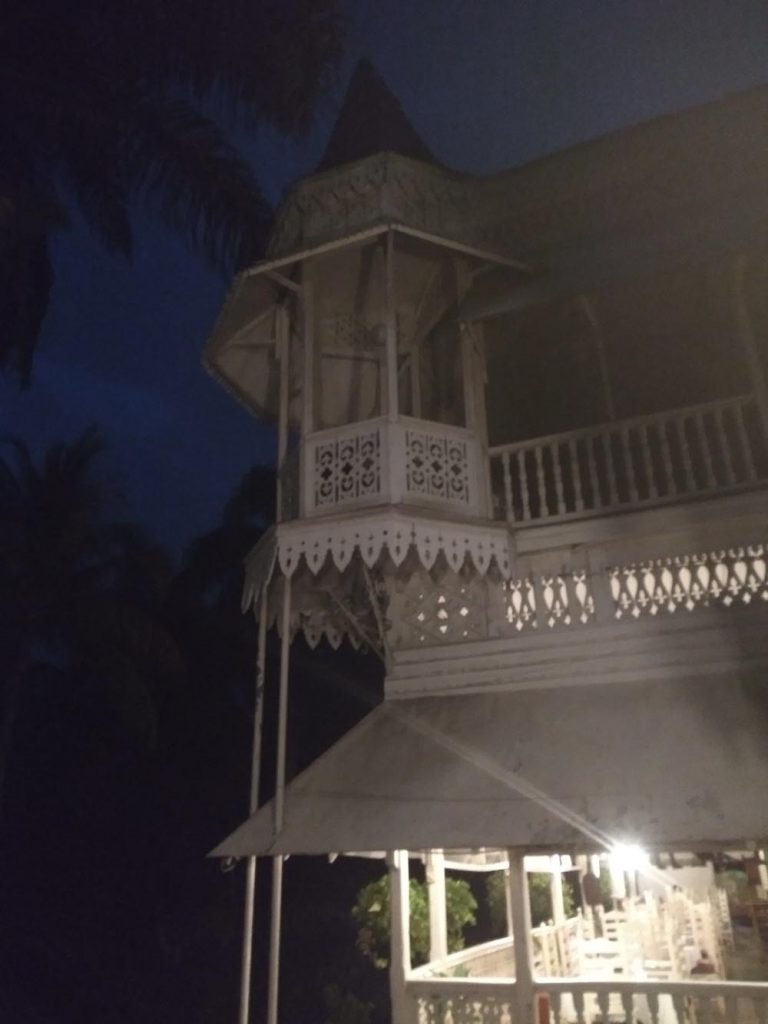
The antechamber was the antithesis of the bright, orderly cleanliness of the front room. Once my eyes adjusted to the darkness, I could see it was home to various shrines piled high with rum bottles, fruits, paket kongo, teacups filled with a mysterious red liquid, half-expired candles, icons, and human skulls. One of the shrines was dominated by a centerpiece consisting of a rough wooden cross, adorned with various strips of cloth and string, capped with a straw hat, suggesting the spirit of Kouzen Azaka was strong here: this Lwa of hard work and success is a farmer (as well as a shrewd businessman), and is seldom depicted without his pipe, machete, shoulder bag, and wearing peasant’s attire, including hat and denim clothing.
Our guide from Haiti Fourchard went out of his way to give me a close-up view of several of the items in this sacred sanctuary, including two of the skulls and a 1.75 litre bottle of Dewar’s White Label, in which several bulb-like objects were floating. He identified them as hot peppers, and told me that this capsicum-infused overproof rum was the favourite drink of another Lwa in this room, Brav Ghede. I commented that Brav Ghede was indeed brave. This earned me a laugh.
I sensed that there weren’t too many tourists to Haiti stopping in at the Sosyete Apredye, andmy hosts must be enjoying the opportunity to show a foreigner around: as for me, I was like a kid in an anthropological candy shop, taking it all in with more than just an academic eye. After conferring briefly with Bisint, Fourchard reached behind him and removed a plywood panel covering a hole in the back wall. From this secret hidey-hole he produced a bundle that—judging by its appearance and the reverence with which they handled it—must have been an object of great power. Bisint gripped one end of the rope that held the entire affair together as it slowly rotated, revealing itself to me in the darkness. I could barely make it out, but it appeared to be a paket of frayed cloth barely enclosing another skull, some bones, and a pair of mummified hands. The hands were arranged palm to palm. The remnants of a revered ancestor, or some poor fellow whose earthly remains were repurposed into a votive object? I knew little enough about Vodou to guess, but enough about basic politeness not to ask.
We thanked the houngans profusely for their hospitality, and left them to get on with their preparations: the Sosyete was to hold a ceremony here tonight, and they invited me to come and observe. Of course, I RSVPed in the affirmative.
Dean Karelekas is the author of “The Men in No Mans Land” which you can buy here.
You can read part 2 of the Haiti chronicles here
